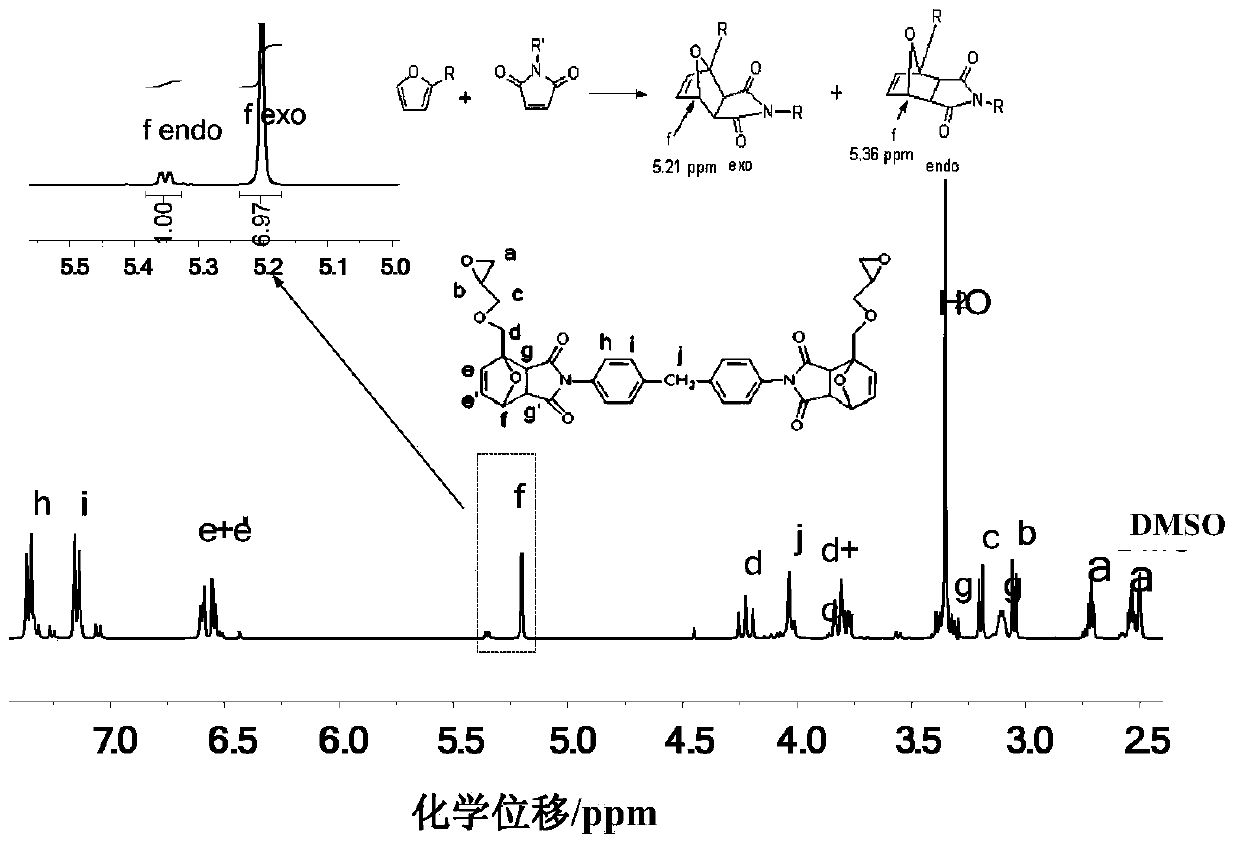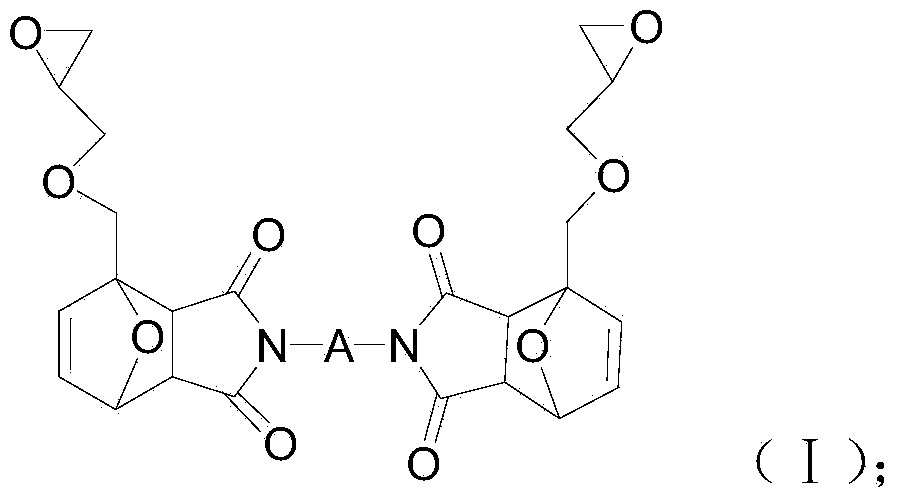Epoxy resin composition, and wet-process ultrasonic degradation method and application thereof
An epoxy resin, ultrasonic degradation technology, applied in the direction of educts, recycling technology, plastic recycling, etc., can solve the problems of increasing recycling costs, organic products can not be well recyclable, etc., to save resources and a good environment. Benefit and economic benefits, the effect of excellent performance
- Summary
- Abstract
- Description
- Claims
- Application Information
AI Technical Summary
Problems solved by technology
Method used
Image
Examples
Embodiment 1
[0042](1) Dissolve 7.14g (0.02mol) of N,N'-(4,4'-methylenediphenyl)bismaleimide (CAS No.13676-54-5)amine into 50mL of anhydrous tetrahydrofuran, and then the solution was added to a 100mL three-necked flask with magnetic stirring and a condenser, and the system was filled with nitrogen for protection. Start the stirrer, water bath, slowly dropwise add 6.16g (0.04mol) furan methyl glycidyl ether (CAS No. 5380-87-0), after the dropwise addition, the system is warmed up to 66°C, and the tetrahydrofuran is refluxed for 24 hours. After the reaction was completed, the system was cooled to room temperature, and the reactant was poured into a large amount of diethyl ether. The precipitate was filtered off, washed several times with methanol, and then vacuumed (pressure3 Pa) dry. The obtained powder was dissolved in 5 mL of acetone, and the solution was added dropwise into 500 mL of ether. Finally, the precipitate was filtered out, vacuum (pressure3 Pa) and dry, you can get furyl met...
Embodiment 2
[0049] (1) The preparation of cured epoxy resin is the same as in Example 1.
[0050] (2) The product was pulverized and swelled in DMSO, and then ultrasonically degraded at 10° C. with a power of 250 W for 3 hours using a cell disintegrator. Centrifuge to separate insolubles and solubles, dialyze the clear layer solution with methanol to remove DMSO, filter and collect the solid in a vacuum oven to dry to remove methanol, weigh and calculate the degradation yield to be 85%, and the product is subjected to gel permeation column chromatography (GPC) measured its molecular weight to be 48,300.
Embodiment 3
[0052] (1) The preparation of cured epoxy resin is the same as in Example 1.
[0053] (2) The product was pulverized and swelled in DMSO, and then ultrasonically degraded at 30° C. with 200 W power for 3 hours using a cell disintegrator. Centrifuge the insolubles and solubles, dialyze the clear layer solution with methanol to remove DMSO, filter and collect the solid in a vacuum oven to dry to remove methanol, weigh and calculate the degradation yield to be 52%, and the product is subjected to gel permeation column chromatography (GPC) measured its molecular weight to be 95,600.
PUM
| Property | Measurement | Unit |
|---|---|---|
| size | aaaaa | aaaaa |
| glass transition temperature | aaaaa | aaaaa |
Abstract
Description
Claims
Application Information
 Login to View More
Login to View More - R&D
- Intellectual Property
- Life Sciences
- Materials
- Tech Scout
- Unparalleled Data Quality
- Higher Quality Content
- 60% Fewer Hallucinations
Browse by: Latest US Patents, China's latest patents, Technical Efficacy Thesaurus, Application Domain, Technology Topic, Popular Technical Reports.
© 2025 PatSnap. All rights reserved.Legal|Privacy policy|Modern Slavery Act Transparency Statement|Sitemap|About US| Contact US: help@patsnap.com



